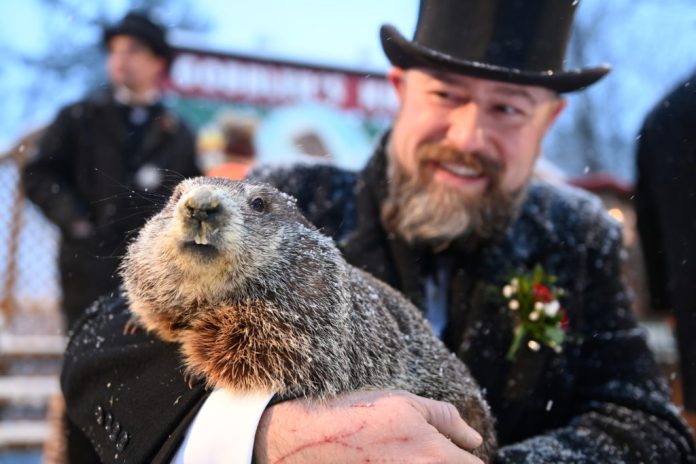Groundhog Day
Groundhog Day, observed annually on February 2nd, is rooted deeply in North American customs and folklore. It involves the iconic Punxsutawney Phil, a groundhog reputed for his weather prediction capabilities. According to tradition, if Phil sees his shadow upon emerging from his burrow, there will be six more weeks of winter. Conversely, if he does not see his shadow, an early spring is expected. This tradition traces back to German settlers in Pennsylvania, incorporating earlier beliefs connected to nature’s cycles. Over the years, this event has grown into a major cultural occurrence, drawing thousands to Punxsutawney, Pennsylvania, and followed by millions worldwide via broadcasts and social media platforms.
Punxsutawney Phil
Punxsutawney Phil, the central figure of Groundhog Day, carries the title of ‘Weather-Predictor Extraordinaire’. He is one of the few animals globally recognized for purportedly predicting seasonal changes. Each year, Phil’s prediction is awaited with bated breath as he emerges from his burrow at Gobbler’s Knob. Beyond his forecasting duties, Phil is also seen as a symbol of continuity and local tradition. According to the Punxsutawney Groundhog Club, Phil consumes a magical ‘elixir of life’ which grants him longevity, adding an enchanting element to his legend. The groundhog has also been anthropomorphized in popular culture, enriching the lore surrounding him and enhancing public engagement.
Weather Prediction Accuracy
The accuracy of Punxsutawney Phil’s weather predictions has often been a topic of debate among both enthusiasts and skeptics. As per historical records, Phil’s predictions have shown about 35-40% accuracy. Critics argue that the methodology, based on whether an animal sees its shadow, is unscientific. However, faithful followers of the tradition emphasize the fun, suspense, and community spirit of the event rather than the accuracy of the forecasts. The annual occurrence also provides an opportunity to discuss meteorological science and weather patterns, bringing attention to the broader field of weather forecasting and its importance in daily life and agricultural planning.
Cultural Impact
Groundhog Day has transcended its origins as a quaint tradition to become a significant part of American culture, particularly emphasizing the human connection to nature’s cycles. The day is not only a fixture in the cultural calendar but also serves as the inspiration for the eponymous 1993 movie ‘Groundhog Day’, which further popularized and cemented the day in American and global culture. Schools and communities across the United States engage in activities related to Groundhog Day, from educational programs about meteorology and zoology to arts and crafts, making it a day of learning and fun for children and adults alike.
Celebration And Events
The celebration of Groundhog Day at Gobbler’s Knob in Punxsutawney is a festive event marked by a variety of activities that include live music, speeches, entertainment acts and a ceremonial procession. This yearly festival attracts visitors from across the nation and journalists from around the world, turning a small Pennsylvania town into a tourist hotspot every February. The event’s proceedings are conducted by the Punxsutawney Groundhog Club, which organizes and oversees the festivities. This large gathering not only boosts local business but significantly contributes to preserving and promoting a unique aspect of America’s cultural and historical heritage.

